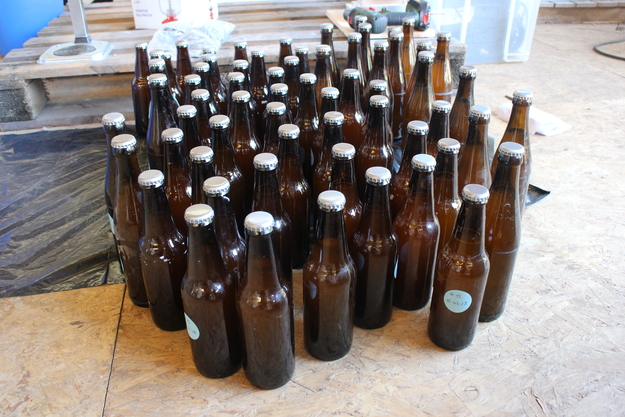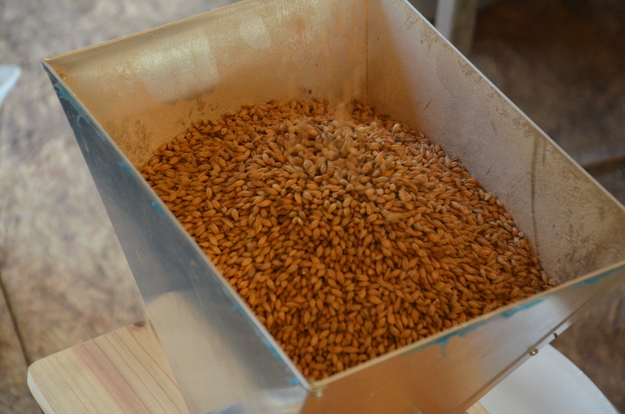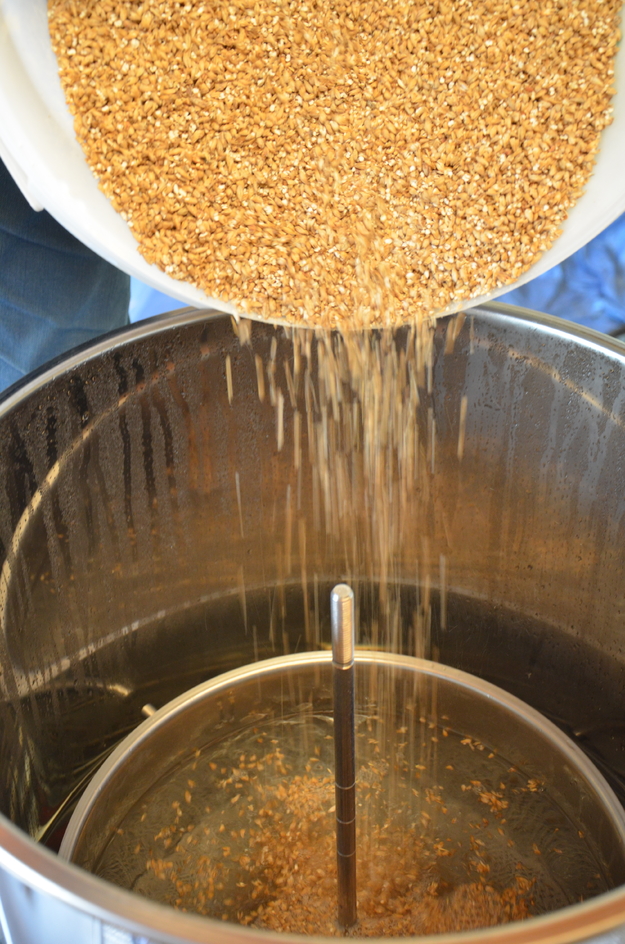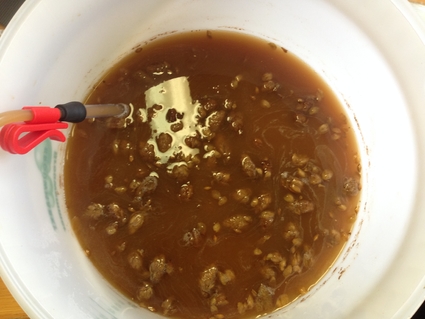Secondary Fermentation - All bottled up! Another few weeks of secondary fermentation

Prepare
The main equipment that you will need: a home brewing kit (we have invested in a Braumeister, a mill to mill the grain, spirit or strong detergent to sterilise working tools, a fermentation bucket or container to ferment your beer in post-brew, bottle capping equipment and of course, the necessary ingredients. See our other blog post about beer recipe experimentation for more information. Let us assume we are making a basic brew which will include grain, hops and yeast. Often this beer is called a SMASH beer (Single Malt and Single Hops).
There will be specific steps that need to made dependent on the brewing device you have. Regardless of this, every brew needs the go through the following motions.
Pre-milled Grain - It is important that the grain is milled just before it is added to the water

Mill
this needs to milled just before use, and it needs to be done so the grain is broken open, but not totally in half.
You will need to set up your brewing tank in the right way, this will include filling the tank with water to heat to 58C, and placing the malt pipe inside the vessel - a basket that sits inside the Braumeister, and will contain the malt.
Mash
Once the Braumeister has reached the desired temperature, put the malt into the malt pipe and stir, so the grain is evenly dispersed within the pipe with no lumps. The wort (what we call the beer liquid pre-fermentation) needs to reach around 68 in order to start the saccharification. This step is meant to to separate the starch in order to convert it to sugar. The time you leave this will vary dependent on strength of beer you desire, but will be around sixty minutes. The longer you leave it the more sugar will be extracted meaning you will have a stronger beer. An iodine test can be done to test if this step is complete.
Into the Braumeister - Be sure that all the grain goes inside the grain pipe and not around!

Sparge
At this point you will need to extract the grain and the malt pipe from the wort. Sparge water is run through the grain to extract the residual sugars all the wort from the grain pipe into the main tank where the brewing process will continue.
Usually all of the grain is removed at this point, but with our Mediamatic-edited process, we continue with the grain in the Braumeister whilst boiling to sterilise the grain before we extract it to inoculate it with the spawn.
Boil
The temperature now needs to be raised to 100C where the wort is sterilised. At this point you can add your hops. You must hold it at this temperature for about ninety minutes, and you can add as many or as little hops as you would like to give the beer more flavour.
Cool
Insert the cooling pipe to cool the beer. Cool water flows through the pipe inside the Braumeister and will bring the temperature of the wort down from 100 to around 20-23.
Ferment
Transfer the cooled wort from the vessel into a fermentor bucket where you will also add the yeast. Seal the bucket and add sulphuric acid to the lock so risk of an external infection entering is eliminated, and place in a dark, temperature controlled room. This usually takes few weeks, to make a SMASH, it should be left for around 2 weeks.
After this has been completed, you are now ready to advance to secondary fermentation. calculate and dissolve the right amount of sugar to add on a stove and add to your beer. Give the beer a gentle stir to circulate the sugar, before dispensing the beer to the bottles.
This is when the secondary fermentation takes place. For a home brew process this usually happens in bottles. It is important that the bottles are thoroughly clean before they are filled with beer, and this can be done by rinsing the inside using a pump and water, cleaning with oxi-clean and soaking them again. Once bottled and capped the bottles should be transferred to another temperature controlled space. Two weeks are usually given for this period.
Drink
Once this time is up, your work is done. Crack open a bottle and drink! Enjoy!
Secondary Fermentation - All bottled up! Another few weeks of secondary fermentation

